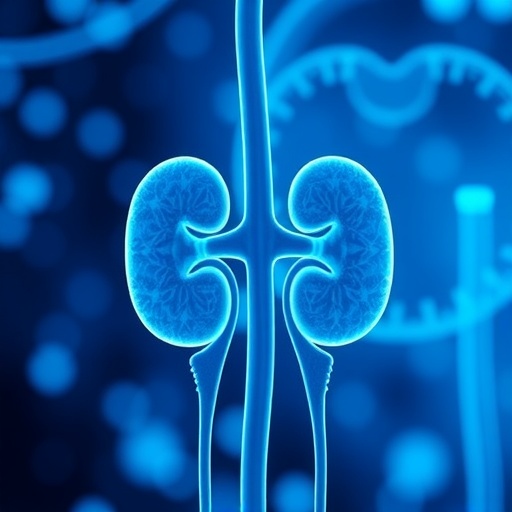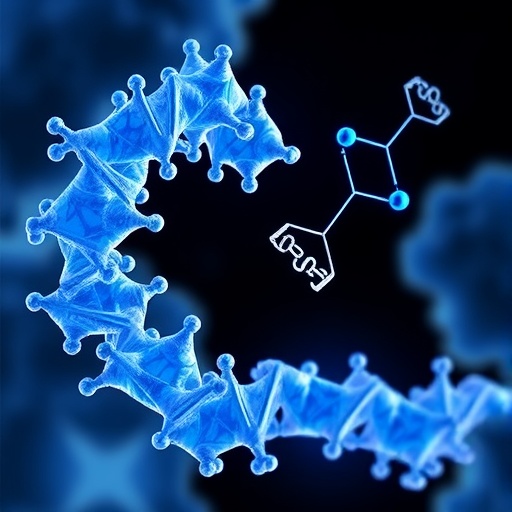
In the rapidly evolving field of biopharmaceuticals, the exploration of biosimilars represents a significant advancement. A recent study undertaken by Morita et al. has shed light on DMB-3115, a biosimilar to Ustekinumab, which holds promise in the therapeutic landscape for autoimmune diseases. This investigation marks a pivotal moment in biosimilar development, especially concerning pharmacokinetic bioequivalence, safety, and immunogenicity as it compares DMB-3115 with its reference products—EU and US-Stelara. Conducted with healthy adult participants, this randomized, double-blind, single-dose study promises to enhance our understanding of biosimilars in clinical settings.
The primary objective of the study was to assess whether DMB-3115 could demonstrate pharmacokinetic bioequivalence to Stelara. Pharmacokinetics—the study of how a drug is absorbed, distributed, metabolized, and excreted—plays a critical role in determining the effectiveness and safety of therapeutics. By comparing these parameters between DMB-3115 and Stelara, the researchers aimed to establish a scientific basis for the biosimilar’s use in clinical practice.
One of the key elements of the study was the implementation of a thorough randomized design, crucial for minimizing bias. Participants were allocated randomly to receive either DMB-3115 or Stelara, ensuring that the results would be attributable to the drug in question rather than extraneous variables. This methodical approach adds robustness to the findings and lends credibility to the conclusion that DMB-3115 can serve as a viable alternative for patients treated with Stelara.
Safety, a paramount concern in medication use, was closely monitored throughout the study. Adverse events were documented meticulously, allowing researchers to gauge not only the frequency of side effects but also their severity. Understanding the safety profile of DMB-3115 in comparison to Stelara is essential, as it can inform clinicians about the appropriateness of prescribing this biosimilar to their patients. The findings promised to reveal whether any observable adverse reactions would preclude the use of DMB-3115 in clinical settings.
Immunogenicity also emerged as a critical focus of Morita et al.’s study. The immune system’s response to biologics can lead to the formation of antibodies, potentially diminishing the drug’s efficacy or causing adverse effects. By assessing the immunogenic profile of DMB-3115, the researchers aimed to determine whether it elicited a similar immune response compared to Stelara. The implications of such findings are vast, as they could dictate how and when DMB-3115 may be utilized strategically in patient care.
Understanding patient populations is another paramount aspect the study addressed. By focusing on healthy adult participants, Morita et al. ensured that baseline health factors would not confound the results. The implications of this choice extend towards extrapolation; if bioequivalence is established in healthy individuals, the biosimilar’s efficacy may be deduced for patients grappling with chronic conditions. Such studies stand as a testament to the rigorous processes involved in ensuring that therapeutic equivalents can safely transition from clinical trials to everyday clinical use.
In recent years, the market for biosimilars has expanded significantly. As healthcare systems grapple with rising drug costs, biosimilars present an opportunity to provide effective treatments at more accessible price points. The findings from this study are particularly timely as they may influence health policy and pharmaceutical pricing strategies. By establishing DMB-3115 as a trustworthy alternative, healthcare systems may promote broader access to therapies that previously were limited due to high costs.
Moreover, the successful implementation of biosimilars carries another layer of significance in terms of patient adherence to treatment plans. Often, the price point of original biologics places a heavy burden on patients. If DMB-3115 can be established as being equally effective and safe, then the healthcare landscape could shift towards greater patient compliance and expanded treatment regimens.
Advocacy for biosimilars is abundant, given their potential to improve patient access and reduce healthcare expenditures. This study serves as a crucial component in promoting the acceptance of biosimilars among healthcare professionals. As research continues to verify the safety and efficacy of DMB-3115, physicians may gain increased confidence in prescribing biosimilars as alternatives to more costly medications.
It’s essential to contextualize this study within the broader implications for public health. The establishment of a reliable biosimilar can alleviate some of the economic strains facing health systems worldwide, advancing the mantra of health equity. If low-cost, effective treatments can reach underserved populations, then the healthcare landscape could witness significant improvements in health outcomes.
As Morita et al. navigate the complexities of biosimilar development, their research paves the way for future studies. Subsequent investigations may explore long-term outcomes, comparative effectiveness in various patient demographics, and the economic implications of integrating DMB-3115 into treatment protocols. The momentum gained from this study may herald a new era in biopharmaceuticals, characterized by innovative approaches to autoimmune disease management.
In conclusion, Morita et al.’s investigation into DMB-3115 represents a compelling intersection of innovation, science, and patient care. By rigorously evaluating pharmacokinetic bioequivalence, safety, and immunogenicity, the foundation is laid for a prospective pathway toward widespread adoption of biosimilars in clinical practice. This research not only contributes to academia but also emphasizes the importance of addressing healthcare disparities through improved access to therapeutics. As the field continues to evolve, the insights gained from such studies will indubitably shape the future of biopharmaceutical treatments.
The horizon is bright for biosimilars like DMB-3115, as the convergence of scientific inquiry and patient-centric methodologies stands to revolutionize therapeutic strategies for autoimmune diseases and beyond.
Subject of Research: DMB-3115, an Ustekinumab biosimilar
Article Title: Pharmacokinetic Bioequivalence, Safety, and Immunogenicity of DMB-3115, an Ustekinumab Biosimilar, and EU- and US-Stelara in Healthy Adult Participants: A Randomized, Double-Blind, Single-Dose Study.
Article References:
Morita, J., Fuhr, R., Koernicke, T. et al. Pharmacokinetic Bioequivalence, Safety, and Immunogenicity of DMB-3115, an Ustekinumab Biosimilar, and EU- and US-Stelara in Healthy Adult Participants: A Randomized, Double-Blind, Single-Dose Study. Adv Ther 42, 4681–4695 (2025). https://doi.org/10.1007/s12325-025-03290-9
Image Credits: AI Generated
DOI: https://doi.org/10.1007/s12325-025-03290-9
Keywords: Biosimilar, pharmacokinetics, immunogenicity, safety, autoimmune diseases, healthcare access, DMB-3115, Stelara.
Tags: bioequivalence of biosimilarsbiosimilars in autoimmune disease treatmentclinical implications of biosimilarsDMB-3115 biosimilar studydrug absorption distribution metabolism excretionhealthy adult participant studyminimizing bias in clinical researchrandomized double-blind clinical trialssafety and immunogenicity of DMB-3115Stelara reference product analysistherapeutic advancements in biopharmaceuticalsUstekinumab pharmacokinetics comparison




